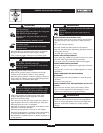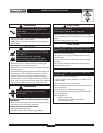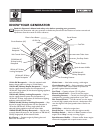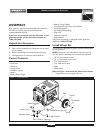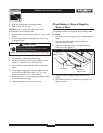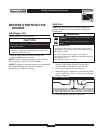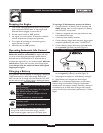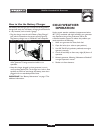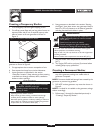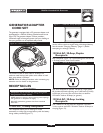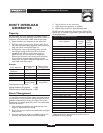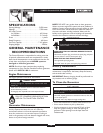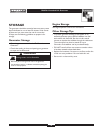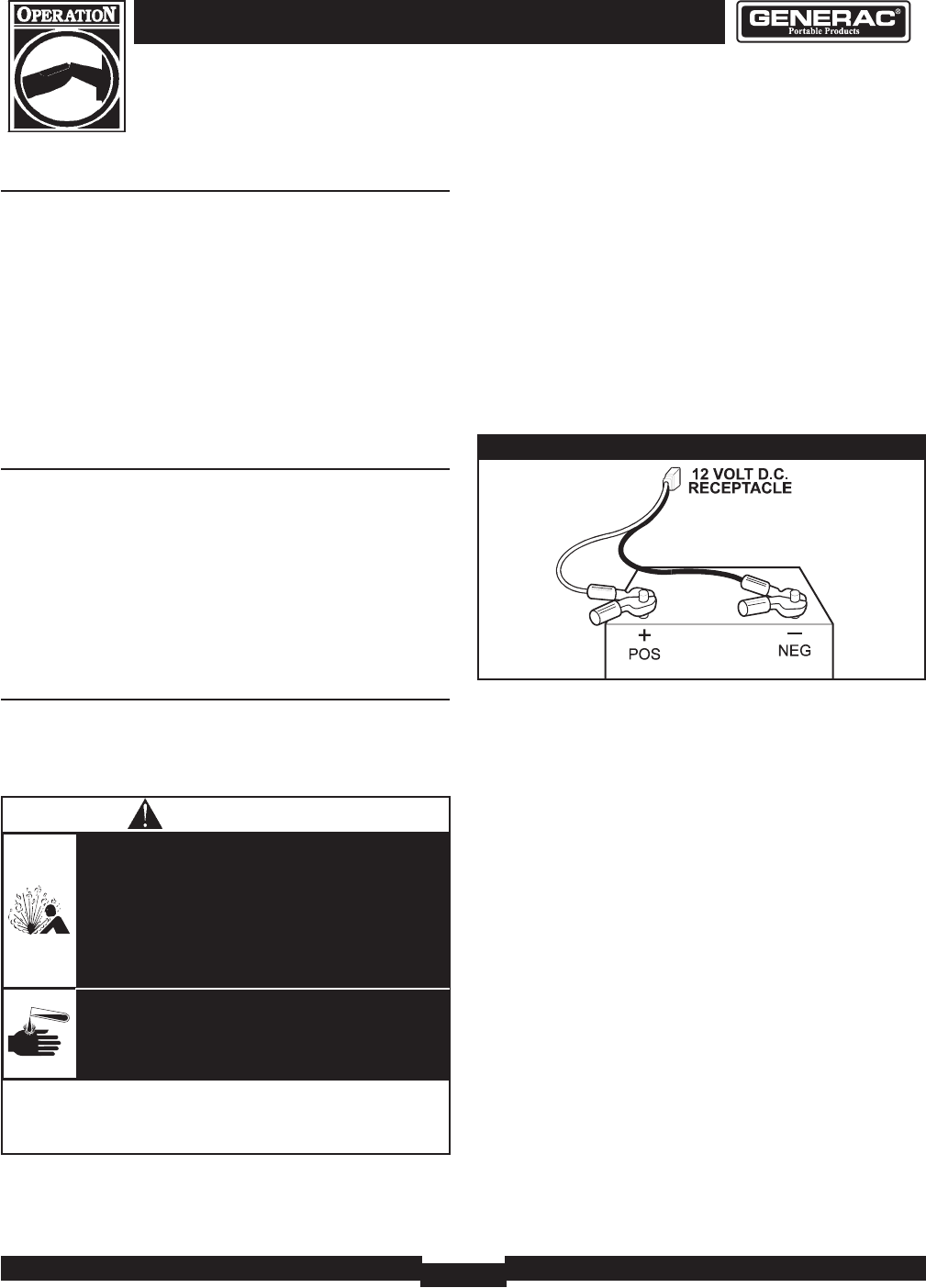
11
7500EXL Extended Life Generator
Stopping the Engine
1. Turn off and unplug all electrical loads from generator
panel receptacles. NEVER start or stop engine with
electrical devices plugged in and turned on.
2. Put idle control switch in “Off” position.
3. Let engine run at no–load for 30 seconds to stabilize
internal temperatures of engine and generator.
4. Turn engine off according to instructions given in
engine operator’s manual.
5. Move fuel valve to “Off” position.
Operating Automatic Idle Control
This switch is designed to greatly improve fuel economy.
When this switch is turned ON, the engine will only
run at its normal high governed engine speed when an
electrical load is connected.When an electrical load is
removed, the engine will run at a reduced speed. With the
switch off, the engine will run at the normal high engine
speed. Always have the switch off when starting and
stopping the engine.
Charging a Battery
Your generator has the capability of recharging a discharged
12 Volt automotive or utility style storage battery. DO
NOT use the unit to charge any 6 Volt batteries. DO NOT
use the unit to crank an engine having a discharged battery.
To recharge 12 Volt batteries, proceed as follows:
1. Check fluid level in all battery cells. If necessary, add
ONLY distilled water to cover separators in battery
cells. DO NOT use tap water.
2. If battery is equipped with vent caps, make sure they
are installed and are tight.
3. If necessary, clean battery terminals.
4. Connect battery charge cable connector plug to panel
receptacle identified by the words “12-VOLTS D.C.”
5. Connect battery charge cable clamp with red handle
to the positive (+) battery terminal (Figure 7).
6. Connect battery charge cable clamp with black handle
to the negative (–) battery terminal (Figure 7).
7. Start engine. Let engine run while battery recharges.
8. When battery has charged, shut down engine
NOTE: Use an automotive hydrometer to test battery
state of charge and condition. Follow the hydrometer
manufacturer’s instructions carefully. Generally, a battery is
considered to be at 100% state of charge when specific
gravity of its fluid (as measured by hydrometer) is 1.260 or
higher.
Figure 7 — Battery Connections
• DO NOT allow any open flame, spark, heat, or lit cigarette
during and for several minutes after charging a battery.
• Wear protective goggles, rubber apron, and rubber gloves.
Storage batteries give off explosive hydrogen gas
during recharging.
Hydrogen gas stays near battery for a long time
after battery has been charged.
Slightest spark will ignite hydrogen and cause
explosion.
You can be blinded or severely injured.
Battery electrolyte fluid contains acid and is
extremely caustic.
Contact with battery fluid will cause severe
chemical burns.
DANGER



